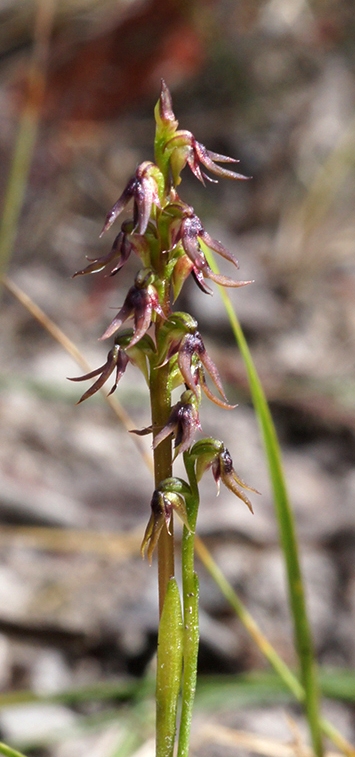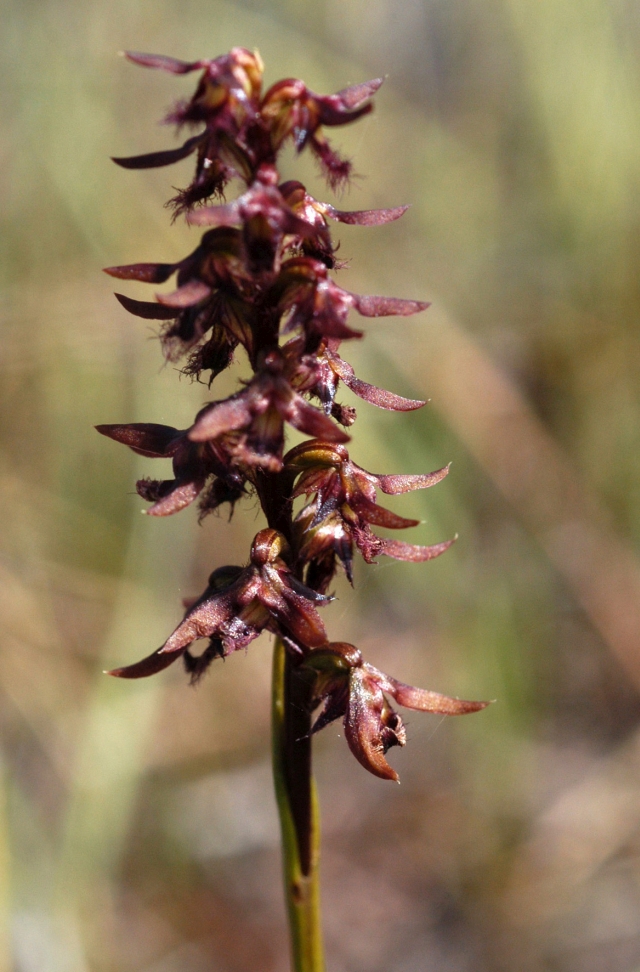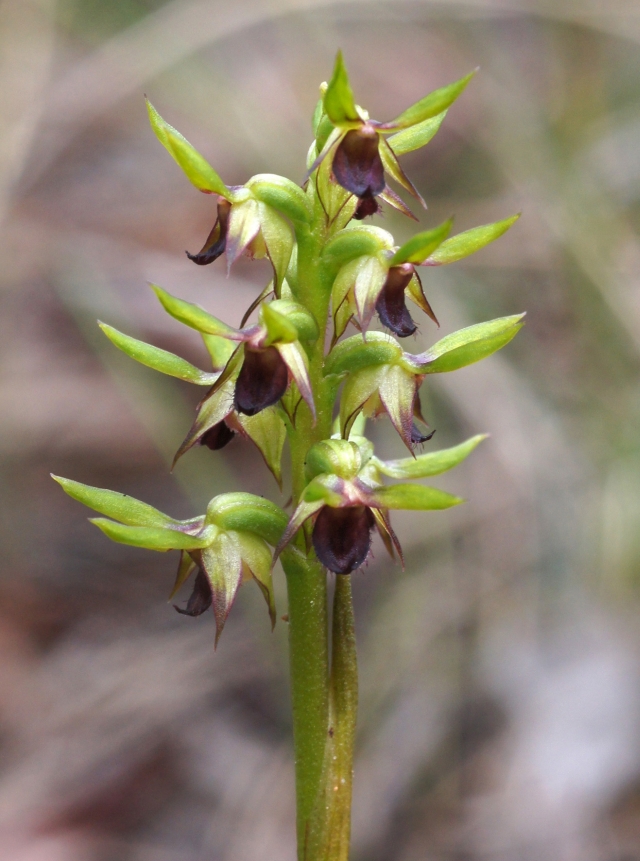Despite the dry, crackling leaf litter, barks and twigs on the ground along No.2 Rd in mid-March, I nevertheless was able to locate a further 10 of the Sharp Midge Orchids, Corunastylis despectans, that were highlighted in our March Newsletter.
They were weak specimens with small flowers but we shouldn’t be too critical, as these small orchids had pushed their way through the dry, hard soil while I had difficulty pushing a stick into the ground to mark where they were flowering!

Sharp Midge Orchid
A walk along the roadside verge on Forest Rd near Gundrys Rd resulted in a find of about 10 Bearded Midge Orchids, Corunastylis morrisii, ranging in height from about 12 to 20 cm. Again the ground was hard and dry and the Matted Bog Sedge, Schoenus breviculmis, that usually holds moisture for these small orchids, was brown and dry and crackled under my feet as I walked along. I was therefore excited to find the flowering stems scattered along the roadside. They were not tall specimens and some were weak, but there certainly were some fine reddish-purple insect-like flowers that were worth admiring.
 Bearded Midge Orchid
Bearded Midge Orchid
There are two main differences between the Bearded Midge and the Sharp Midge. Firstly, the Sharp Midge has sharply pointed sepals and petals that lack hairs, while the petals and dorsal sepals of the Bearded Midge have hairy margins. Secondly, the labellum on the Sharp Midge lacks hairs, while the labellum of the Bearded Midge has densely fringed margins with long hairs. While the Sharp Midge is almost endangered in our area, the Bearded Midge is usually a common orchid growing in open areas of heathlands, woodlands and along roadsides.
My favourite Midge Orchid is the Fringed Midge Orchid, Corunastylis ciliate. It grows only to about 12 cm tall and has a reddish, oblong labellum with the margins being fringed with sparse, short hairs—hence the common name of Fringed Midge Orchid. It should be flowering at this time of year, but the weather conditions have obviously not been to its liking. I have searched unsuccessfully in the areas where I know this orchid can usually be found, but I will keep looking, especially if we ever get some rainfall.
 Fringed Midge Orchid
Fringed Midge Orchid
Keep on the alert for other autumn flowering orchids that should soon be appearing: Parson’s Bands, Eriochilus cucullatus, Autumn Greenhood, Pterostylis sp. aff. revolute, Tiny Greenhood, P. parviflora, and Brown Tipped Greenhoods, P. clivosa.
Please let us know of your observations. Photos and descriptions of all the orchids that grow in the Anglesea district are documented in Orchids of the Anglesea District available from Angair.
Margaret MacDonald